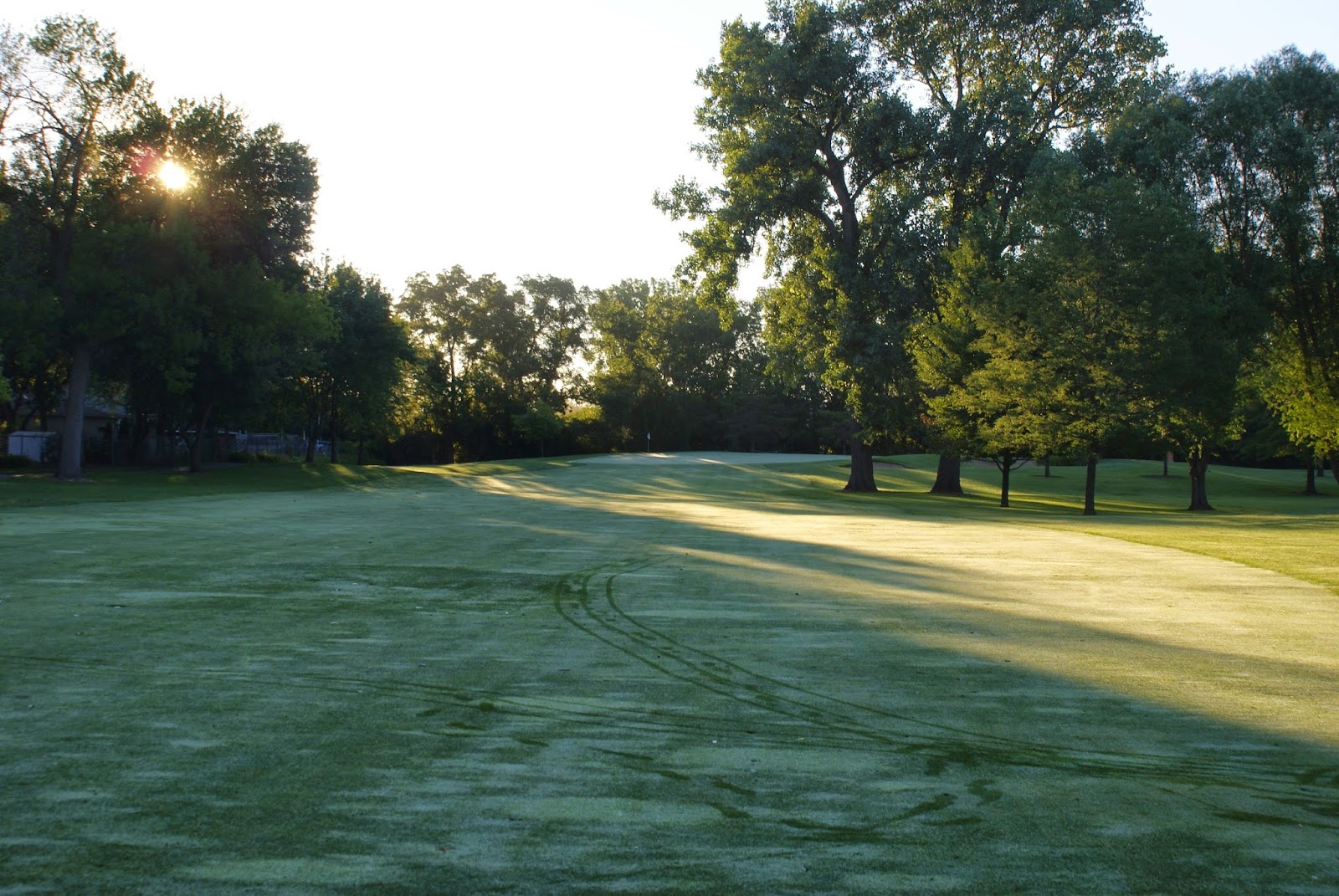Below is the putting green on June 27th. I am often asked about the ornamental grasses you can see in the background along the first tee. They are Calamagrostis x acutiflora 'Karl Foerster'.
Early mornings have been beautiful lately:
 |
| 5 Green |
 |
| 4th Hole |
 |
| Karl changing cups on the 4th green |
The renovated bunkers are performing very well. Improved drainage, new sand, and a sod "face" have greatly improved this sand trap on the first green. A small amount of rain used to wash this trap out and make it unplayable. Now it is playable hours after a strong thunderstorm.
Even the infamous 7th fairway has been cooperating this year after starting out more than 50% dead. So far, we have not experienced the deadly combination of excessive rainfall, high heat, and solar radiation that damaged this floodplain fairway in 2010 and 2011.
 |
| 7th Fairway enjoying 2014 |
And finally . . . Safety first! Two junior greenkeepers try on bump caps before inspecting the course:















